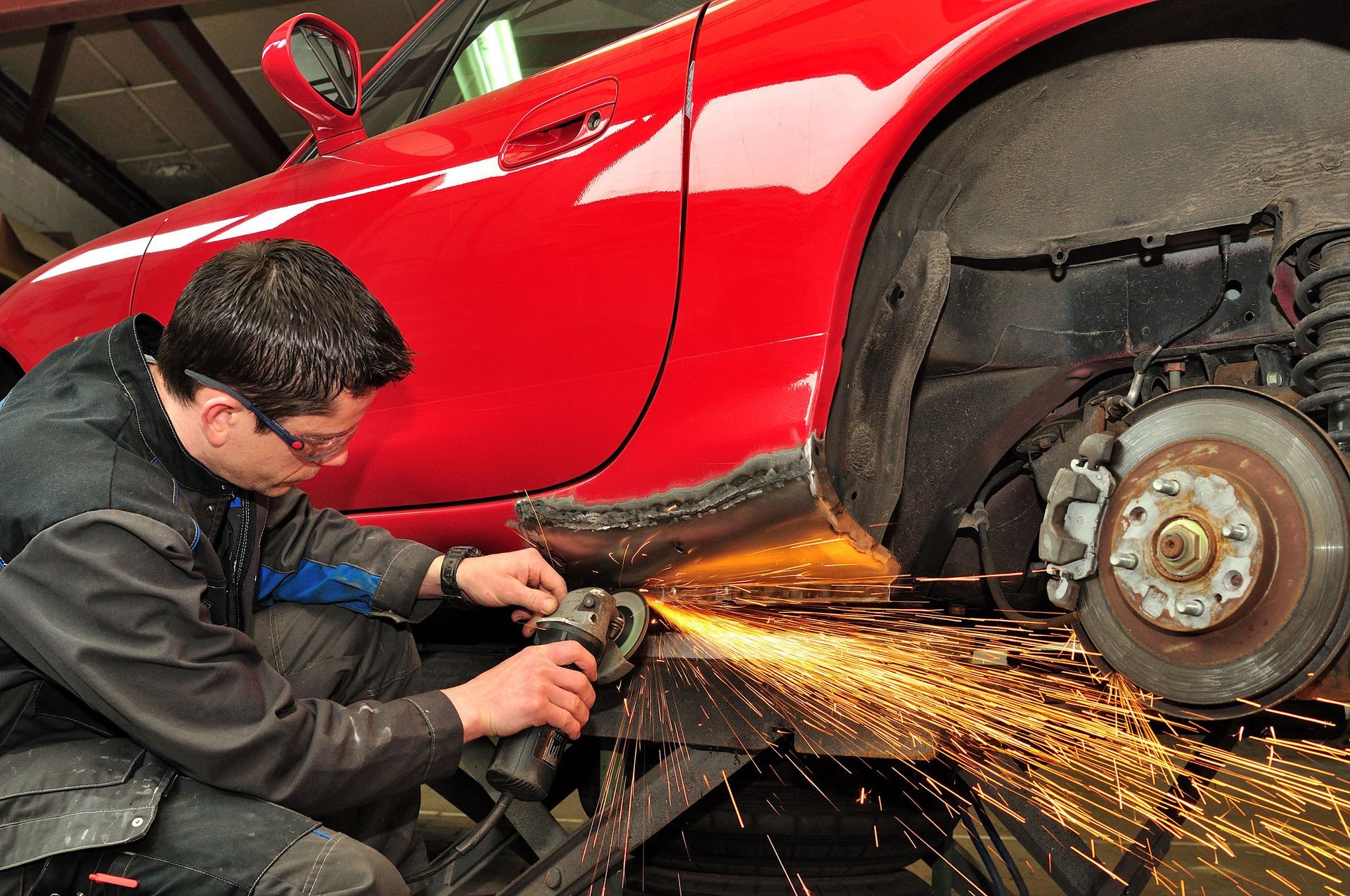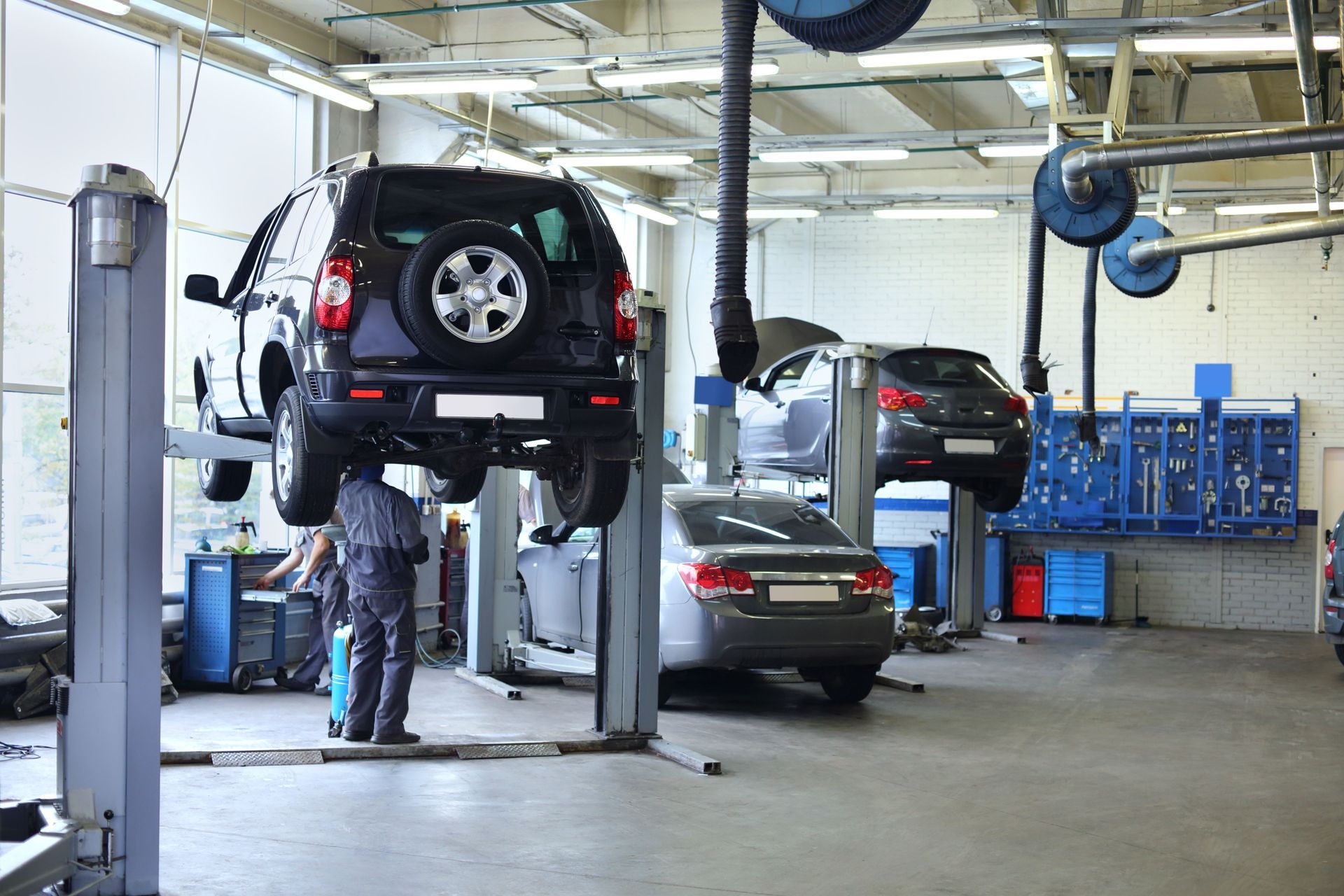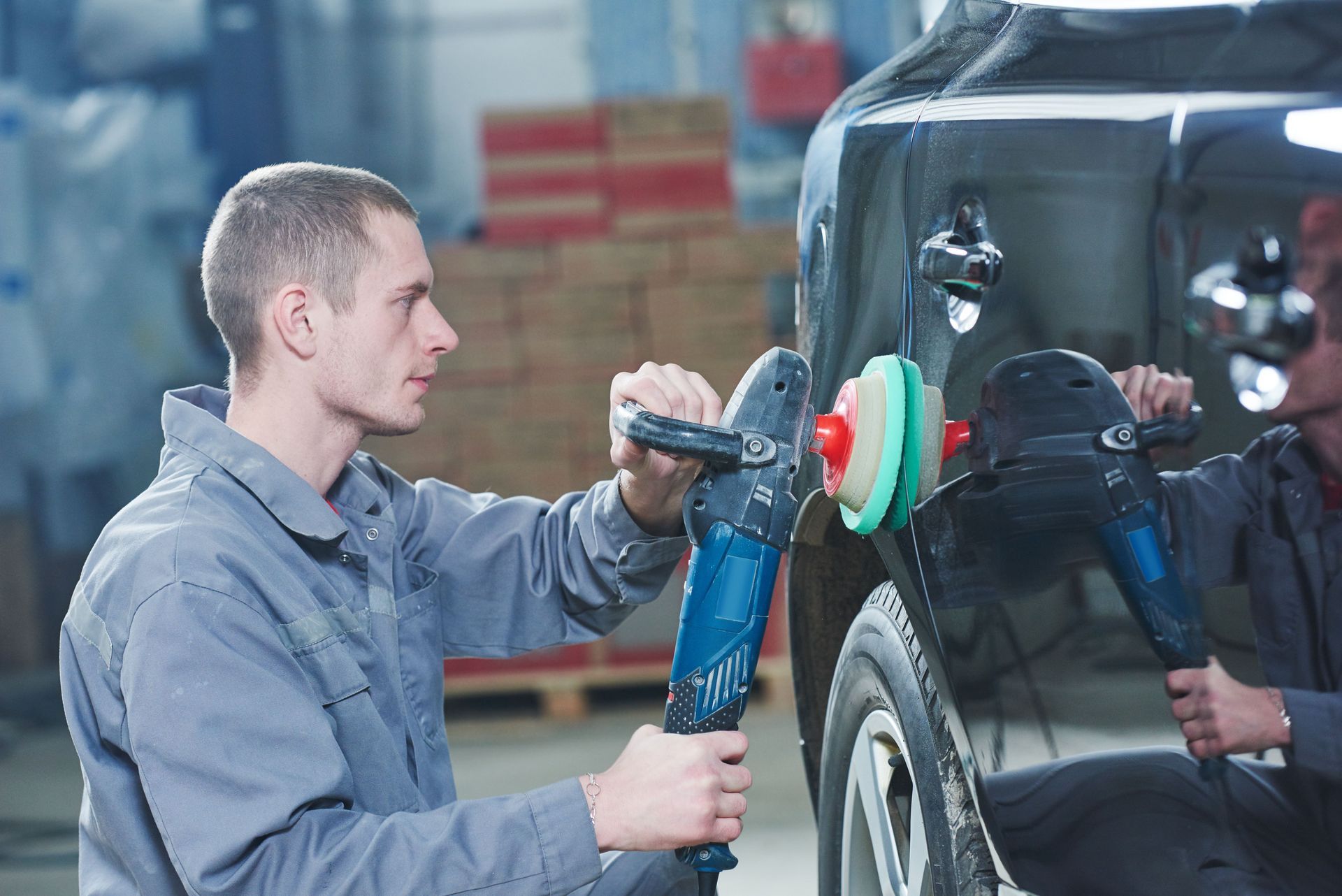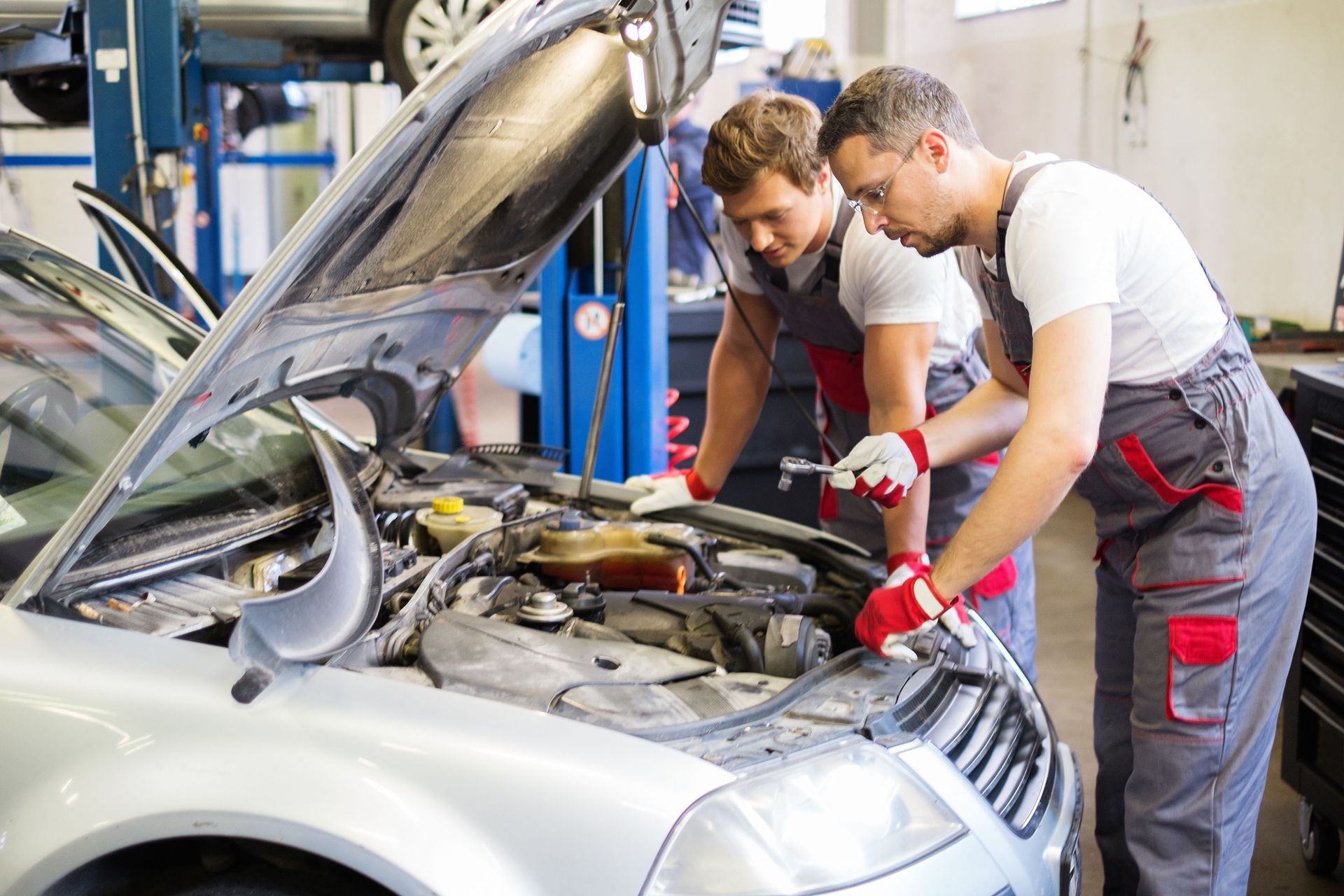Everything You Need to Know About Collision Repair Services
Experiencing a vehicle collision can be stressful and overwhelming, but understanding the collision repair process and the role of collision repair services can help you navigate it with confidence. According to NHTSA.gov, there are approximately 6 million police-reported crashes annually, leading to an estimated $400 billion in damages. Collision repair services are essential for restoring your vehicle to its pre-accident condition, ensuring that safety, performance, and appearance are fully recovered.
Whether you’re dealing with minor dents or severe structural damage, knowing what to expect from collision repair services empowers you to make informed decisions. This comprehensive guide walks you through everything you need to know about collision repair services, helping you protect your investment and get back on the road safely.
Understanding Collision Damage
Collision damage can be categorized into various types, including minor, moderate, and severe damage. Minor damage typically includes scrapes, dents, and small paint damage that do not affect the vehicle's structural integrity. Moderate collision damage might involve larger dents, damage to non-structural parts such as doors or fenders, and may require more extensive repairs. Severe collision damage often involves frame damage or extensive destruction requiring major part replacements, which can compromise the vehicle’s roadworthiness if not repaired properly. It is important for vehicle owners to quickly assess and categorize the type of damage to promptly address the necessary repairs.
The Impact of Severity
The severity of collision damage significantly impacts the repair process and cost. Minor damages often result in more straightforward and less costly repairs, while moderate and severe damages can necessitate comprehensive evaluations and in-depth repairs, increasing both time and expense. Additionally, severe damage might require the alignment of the vehicle's frame, which can be more laborious and involve sophisticated technology. Repairing such damage properly is critical to maintaining the vehicle's safety standards and ensuring it functions as intended. Decisions regarding whether to repair or replace parts often hinge on the severity, requiring a knowledgeable approach to maintain cost-effectiveness.
Assessing Visible vs. Hidden Damage
Visible damage is typically what most vehicle owners first notice following an accident, encompassing obvious dents, scraped paint, or broken lights. However, hidden damage beneath the vehicle’s exterior can often be more significant, affecting the vehicle’s systems or structural integrity, and might not be readily apparent without professional evaluation. Technicians use advanced diagnostic technology to uncover such hidden issues that, if left unresolved, could lead to further complications or compromise vehicle safety. It is crucial for vehicle owners to ensure thorough assessments to address all potential damages beyond what is visible. Trusting a knowledgeable repair service to identify both surface and underlying issues is key to a complete restoration.
The Collision Repair Process
The initial step in the collision repair process is a thorough assessment of damage, conducted by experienced technicians. During this phase, detailed inspections are performed to evaluate both visible and hidden damages, using advanced diagnostic tools. Once the extent of damage is identified, an estimation of the repair costs is prepared, considering labor, parts, and potential complications. This estimate provides vehicle owners a clear understanding of the financial involvement and the scope of necessary work. Transparent communication during this stage ensures the owner is informed and agrees with the proposed repair strategy.
Disassembly and Parts Ordering
Following the initial assessment and cost estimation, the disassembly of damaged parts of the vehicle is undertaken to gain full access to the affected areas. This careful dismantling is critical in identifying all the damaged components that need repair or replacement. Once damage is fully assessed, the necessary parts are ordered, ensuring they match original equipment manufacturer (OEM) specifications to maintain compatibility and quality. Timely ordering of parts is crucial to avoid delays in the repair timeline. Coordination between the technicians and parts suppliers ensures a smooth transition to the repairs phase.
Structural and Mechanical Repairs
In this stage, extensive repairs to structural and mechanical systems are executed, addressing core damages identified in the initial assessment. Structural repairs may involve alignment of the vehicle’s frame using precise machinery that realigns and restores integrity. Mechanical repairs are performed by skilled technicians to resolve any issues with the engine, transmission, or other vital systems potentially impacted by the collision. The focus is to restore these elements to manufacturer specifications, ensuring optimal repair quality and vehicle safety. This stage might also uncover additional hidden damages, which are tackled then to ensure comprehensive restoration.
Choosing the Right Collision Repair Shop
Choosing a reliable collision repair shop for collision repair services involves researching its reputation and customer reviews. Online platforms and forums offer insights into previous customers’ experiences and satisfaction levels with the service provided. Evaluating feedback about repair quality, service timeliness, and customer service provides a clearer picture of what to expect. Word-of-mouth recommendations from friends and family can also be invaluable in finding trustworthy collision repair services providers. A shop with a stellar reputation is more likely to provide high-quality repairs and customer satisfaction.
Understanding Certifications and Qualifications
The qualifications and certifications held by a collision repair shop indicate the level of expertise and training of their technicians. Recognized certifications such as Automotive Service Excellence (ASE) or manufacturer-specific training provide assurance of a shop's adherence to high industry standards. Certified collision repair services technicians are likely to be more knowledgeable about the latest repair techniques and technologies. Reviewing these credentials can help vehicle owners make informed decisions about entrusting their vehicle to a particular shop. Certified shops often offer more reliable and quality-focused services.
Assessing Customer Service Quality
Customer service is a critical aspect of any collision repair services experience, impacting overall satisfaction. Effective communication throughout the repair process, including timely updates and honest estimates, reflects a commitment to customer care. Shops that prioritize transparent communication practices and address any concerns promptly provide peace of mind to vehicle owners. Customer service excellence also includes a friendly atmosphere, willingness to explain repair procedures, and a helpful attitude. Selecting a repair shop known for outstanding customer service ensures a more positive collision repair services experience.
Cost Considerations in Collision Repair
Several factors contribute to the overall cost of collision repair services, including the extent of damage, the type of parts needed, and labor rates. Parts can be categorized as OEM, aftermarket, or salvaged, each affecting cost and final repair quality differently. Labor costs vary significantly by location, repair complexity, and shop reputation. Additionally, the urgency of repairs can sometimes result in expedited services and higher costs. By understanding these factors, vehicle owners can better anticipate total expenses and make more informed financial decisions regarding collision repair services.
Understanding Repair vs. Replace Decisions
Deciding between repairing damaged components or replacing them altogether is an essential part of the repair process. This decision often depends on factors such as the extent of damage, part availability, and the potential impact on vehicle safety and longevity. Repair may be viable for minor damages, whereas severe or critical safety component issues might necessitate complete replacement for assurance of safety and performance. Trusted repair services will guide these decisions based on professional assessments, balancing cost with necessity. Underlying these decisions is always the emphasis on retaining the structural integrity and safety of the vehicle.
Budgeting for Unexpected Expenses
Unexpected expenses are common in collision repair, often emerging during disassembly or upon further inspection of the damage. Vehicle owners should prepare for surprise costs by setting aside additional funds beyond initial estimates. Discussing potential additional costs with the repair service can help manage expectations and avoid unwelcome surprises. Insurance may cover unexpected expenses, but having a financial cushion ensures collision repair services proceed smoothly regardless of insurance arrangements. Being financially prepared helps mitigate stress and contributes to a more seamless repair journey.
Collision repair services play an important role in vehicle maintenance and ensuring safety post-accident. Armed with the knowledge from this article, vehicle owners can make informed decisions about repair processes, choose reliable service providers, and effectively manage the financial aspects of collision repair. By understanding preventive measures, they can also minimize the chances of future accidents, ensuring a safer driving experience.
If you’ve recently been in a collision or want to be prepared, contact a trusted collision repair specialist today at Mullins Body Shop to get expert guidance and restore your vehicle with confidence.





Share On: